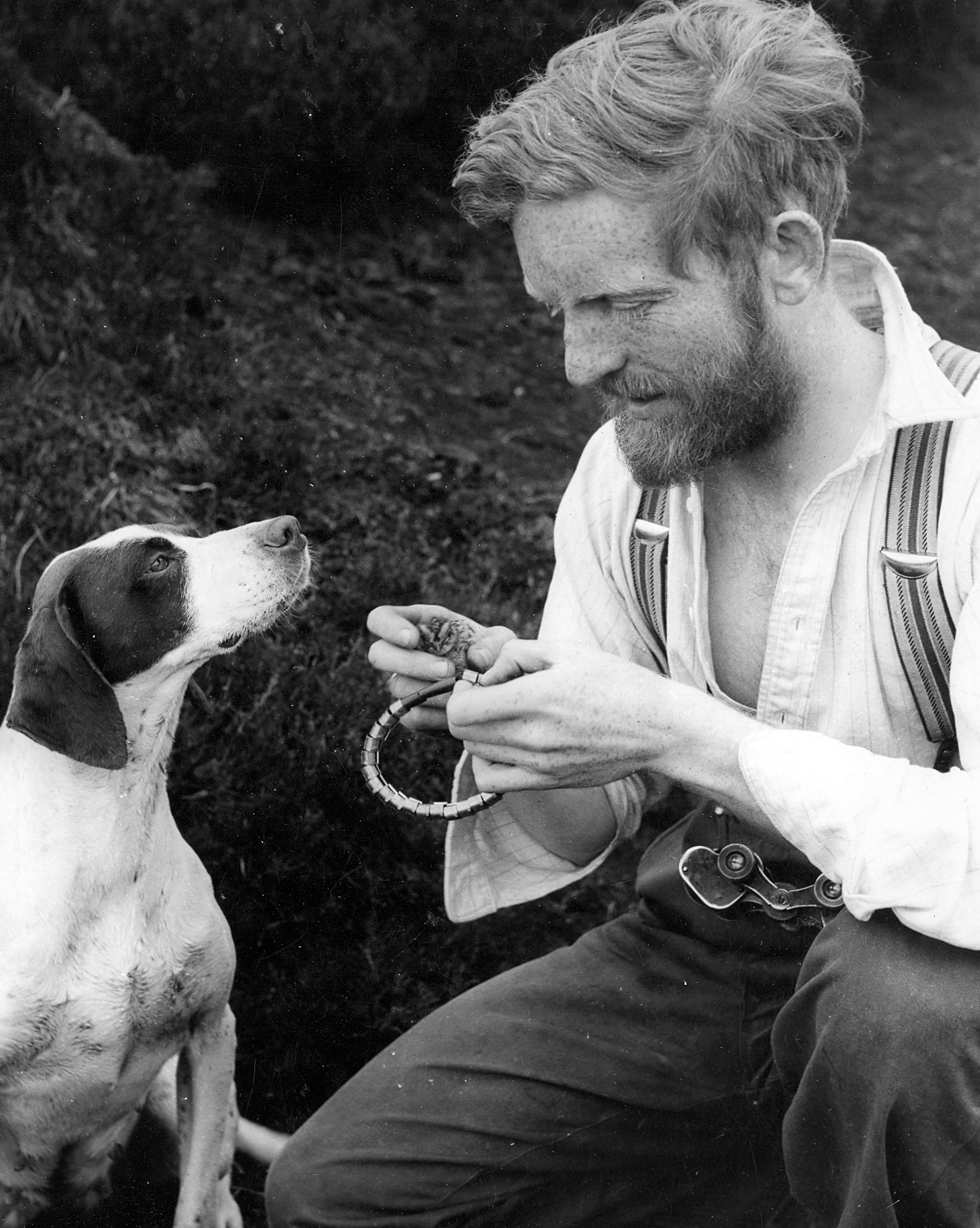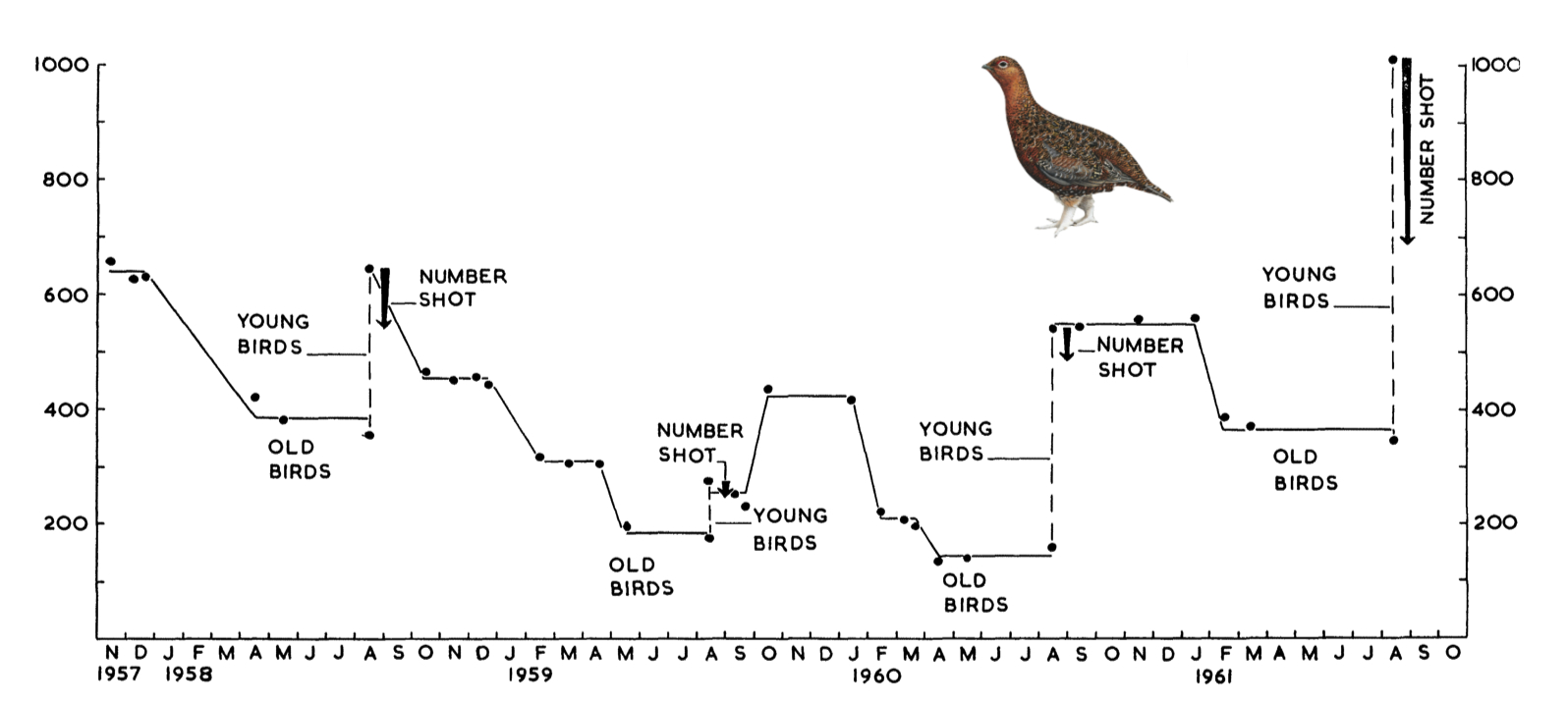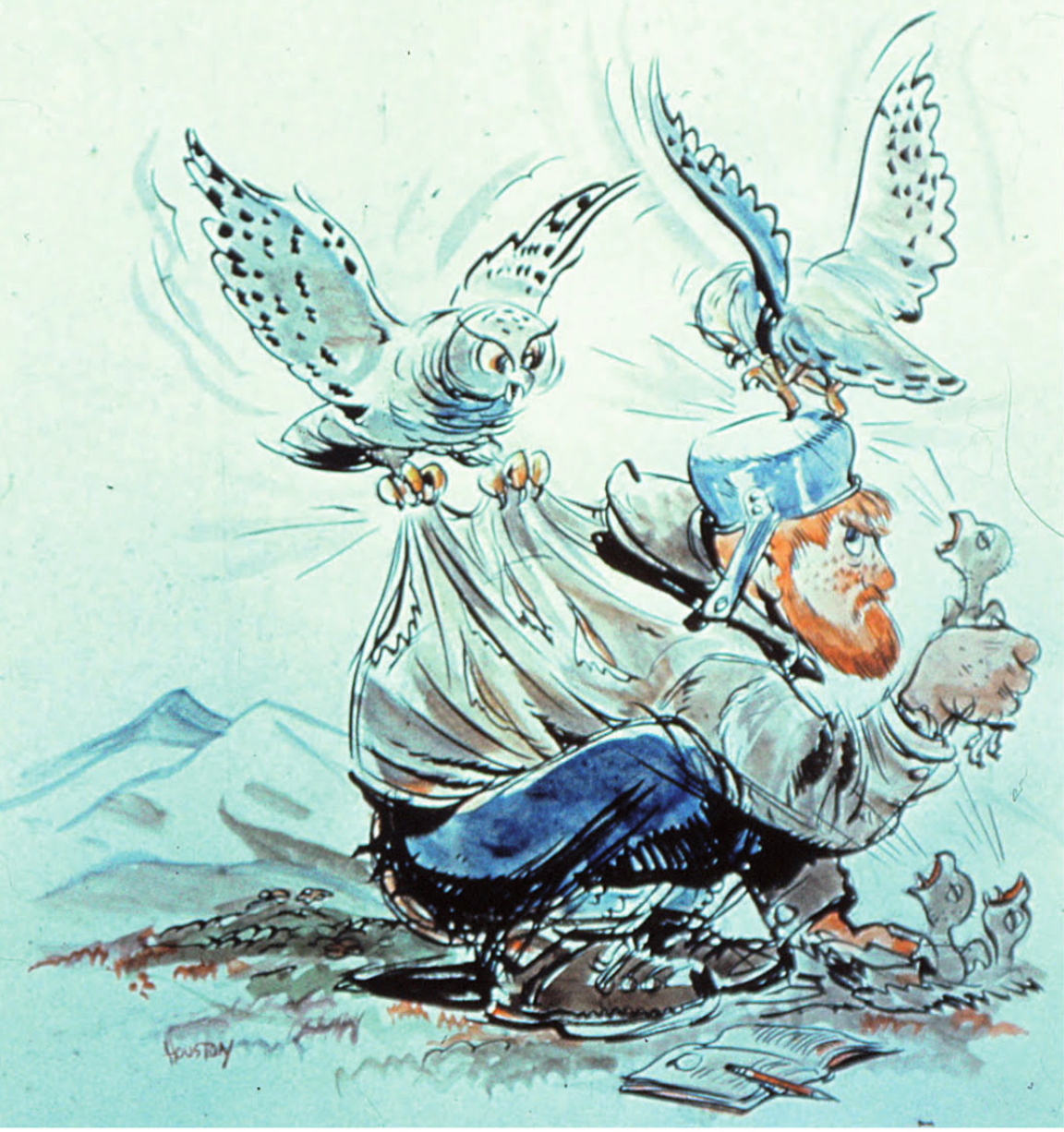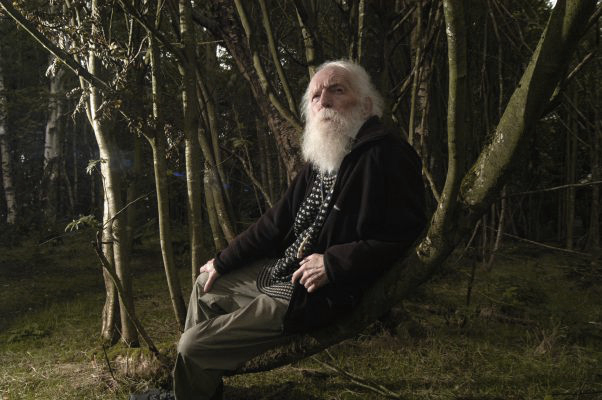In 2013, while compiling information for a chapter on the contributions of ornithology to evolutionary biology, I carried on a lively correspondence, by email, with Adam Watson. Watson was a renowned Scottish ecologist, naturalist and conservationist who had worked with Vero Wynne-Edwards, a staunch promoter of evolution by group selection. We have all of Wynne-Edwards archives here at Queen’s University [1] but the man was exceptionally careful not to record (or preserve) any personal opinions in his letters or field notes. I wrote to Watson to learn more about Wynne’s interactions with David Lack, the leading evolutionary ecologist of the day, who saw no need for anything different from the sort of individual selection described by Darwin.
Wynne-Edwards and Watson had, for example, taken David Lack on a walk in the Cairngorms in 1968 at a time when the two men were having a fierce debate about group selection [2]. But, as Watson wrote to me, their meeting was extremely amicable and group selection was, as far as he could remember, never mentioned. Lack impressed everyone by spotting a rare bird and a rare plant [3], and the day turned out to be a pleasant hike in the mountains with a focus on natural history.

Watson was on that day-hike with Lack and Wynne-Edwards, not only because he worked with Wynne, but also because he was an expert on the Cairngorms, three plateaus of wild natural beauty in the eastern highlands of Scotland, dotted with the blunted fists of mountains rising above the plateaus. Five of those mountains are among the 6 highest peaks in Scotland and snow can fall at any time of the year. I have never been to that part of Scotland but descriptions of both the landscape and the birds remind me of High Arctic Canada, with breeding Snow Buntings and Rock Ptarmigan, and even the occasional Lapland Longspur and Snowy Owl. Watson loved it there and spent much of his life exploring and studying the region. He certainly earned the local moniker of ‘Mr Cairngorms’.
I first encountered Watson’s research in the 1970s in a graduate course at UBC in ecology where we read his classic papers with Jenkins and Moss on the causes of red grouse cycles in Scotland. These Scottish biologists were clearly in the Elton/Chitty/Krebs school of ecology, wherein they attributed population fluctuations to extrinsic factors like food supply and predation.

My second encounter with Watson’s work began in the 1980s when I started studying Rock Ptarmigan in the Canadian High Arctic. Watson had done his own PhD in 1956 on Rock Ptarmigan in Scotland. He continued to study that species at least until 1964 but then turned his attention to the more widespread and economically important Red Grouse. We were interested in behavioural ecology, specifically sexual selection with respect to combs and plumages, so it was important for us to keep the basic ecology of ptarmigan (of which the Red Grouse is one) in mind. We were also inspired by the experimental approach that Watson and colleagues took to addressing questions of interest.
During the 1980s, Peter Hudson, Andy Dobson and their colleagues discovered a role for parasites in these population fluctuations. The result was a fierce conflict between Watson and the others about the controlling factors in population regulation. Thirty 30 years later, now that the dust has settled a bit, I expect that both camps had useful data and arguments to bring to bear on population cycles.
Most recently, when writing about the history of ornithology in Nunavut, I read Watson’s book [4] and papers from his summer on Baffin Island in 1953. In 1945, when he was only 14, Watson met Wynne-Edwards when Wynne moved to Aberdeen as Regius Professor. Wynne’s first academic position was at McGill University where he lectured from 1929 until the start of WWII. With their shared interest in natural history, Wynne and Watson often hiked in the mountains of northeastern Scotland.
Watson did his honours thesis at Aberdeen University studying ptarmigan under Wynne’s supervision, then in 1952 began his PhD continuing his ptarmigan research. At Wynne’s encouragement, Watson applied for and won a Carnegie Arctic Scholarship to attend McGill University for a year, associated with the nearby Arctic Institute of North America. It was there that the Director, Pat Baird, invited Watson to be zoologist on a 13-man expedition [5] to Baffin Island in 1953.

 Watson was clearly thrilled with his experiences on that expedition: It was a very fine summer trip. Being on that expedition with my expedition colleagues and Inuit companions, and studying Arctic wildlife among the finest mountains I had ever seen, were a rare treat and a highlight of my life. Perhaps they were the highlight.[7].
Watson was clearly thrilled with his experiences on that expedition: It was a very fine summer trip. Being on that expedition with my expedition colleagues and Inuit companions, and studying Arctic wildlife among the finest mountains I had ever seen, were a rare treat and a highlight of my life. Perhaps they were the highlight.[7].
One clear attraction was that that region in particular, and Baffin Island in general, had rarely been explored by scientists. Only two ornithologists had so far done any work on Baffin: Bernhard Hantzsch on an ill-fated expedition to cross the island in 1909-1911, and Dewy Soper looking for the breeding grounds of the blue goose in the 1920s. Watson thus did not really know what to expect on the Penny Highlands so he did both general surveys and focused studies.
Toward the end of the summer they were joined by Wynne-Edwards who had been studying seabirds at Cape Searle at the tip of the Cumberland Peninsula. In preparation for their trip back to civilization everyone got their hair cut. I expect that Watson really treasured the photo above where his PhD supervisor was cutting his hair in one of the most beautiful outdoor barbershops in the world.
Adam Watson died [8] on 23 January 2019. He was 88 years old. I never had the privilege of meeting him, but I feel honoured to have known him even just by email. Someday I will visit the Cairngorms to pay tribute to his tireless efforts to preserve that interesting part of Scotland for both the birds and hares, and for people like him that love wild places.

SOURCES
-
Birkhead TR, Wimpenny J, Montgomerie R (2014) Ten Thousand Birds: Ornithology since Darwin. Princeton, NJ: Princeton University Press.
- Hudson P, Tapper S (1979) Grouse populations—do they cycle? Annual Review of Game Conservancy 11:17–23.
- Hudson PJ, Dobson AP, Newborn D (1985) Cyclic and non-cyclic populations of red grouse: a role for parasitism? In: Ecology and genetics of host-parasite interactions (Ed by Rollinson D, Anderson RM). Pp 79-89. London: Academic Press. London.
- Hudson PJ (1986) The effects of parasitic infections on the population fluctuations of red grouse in the north of England. In: Proceedings of the Third International Grouse Symposium (ed. By Hudson PJ, Lovell TWI )
- Jenkins D, Watson A, Miller GR (1963) Population Studies on Red Grouse, Lagopus lagopus scoticus (Lath.) in North-East Scotland. Journal of Animal Ecology 32: 317-376
- Montgomerie RD (2018) History of ornithology in Nunavut. pages 45-69 in Richards JM, Gaston AJ, editors. Birds of Nunavut. Vancouver: UBC Press.
- Watson A (1953) Birds in Cumberland Peninsula, Baffin Island. Canadian Field-Naturalist 71:87–109.
- Watson A (1956) The annual cycle of rock ptarmigan. Ph.D. thesis. Aberdeen Univ., Aberdeen, Scotland.
-
Watson A (1957) The behaviour, breeding and food-ecology of the snowy owl Nyctea scandiaca. Ibis 99:419–462.
-
Watson A (1963) Bird numbers on tundra in Baffin Island. Arctic 16:101–108.
- Watson A (1965) A population study of ptarmigan (Lagopus mutus) in Scotland. Journal of Animal Ecology 34: 135-172.
-
Watson A (2011) A Zoologist on Baffin Island 1953. Rothersthorpe, UK: Paragon Publishing.
- Watson A, Moss R (1970) Dominance, spacing behaviour and aggression in relation to population limitation invertebrates. In A. Watson (Ed.), Animal populations in relation to their food (pp. 167-220). Blackwell Sci.
- Watson A, Moss R (1971) Spacing as affected by territorial behaviour, habitat and nutrition in red grouse (Lagopus l. scotius). In A. H. Esser (Ed.), Behaviour and environment; the use of space by animals and men (pp. 92-111). New York and London: Plenum Press.
- Watson A, Moss R (1977) Population ecology of red grouse. Annual Report of the Institute of Terrestrial Ecology 1977 1978:18–21.
- Watson A, Moss R (1979) Population cycles in the Tetraonidae. Ornis Fennica 56:87–109.
Footnotes
- archives at Queen’s University: Wynne-Edwards’s grand-daughter, Kathy Wynne-Edwards, was one of my faculty colleagues here in the Biology Department when Wynne-Edwards died, and a few of his relatives also lived in Kingston so this was a logical place for his archives to be deposited. See here for more details.
- Debate about group selection: see Birkhead et al. 2014 pp 369-371
- rare plant: the Lacks were on that hike especially to look for the rare Tufted Saxifrage (Saxifraga caespitosa) which was purported to be there.They did not find it but they did find the Brook Saxifrage (Saxifraga rivularis), a new site for a species that was also quite rare [see CORRECTION below]
- Watson’s book: self-published in 2011, full 58 years after he went to Baffin Island this chronicle of his summer on the Canadian tundra is remarkably detailed and full of both adventure and natural history.
- sketch by James Houston: Houston was a Canadian artist and novelist who lived for many years in Cape Dorset on Baffin Island; he is credited with launching the production of Inuit prints and sculpture
- 13-man expedition: only 12 returned as one of the glaciologists, Ben Battle, drowned and was buried on the tundra
- quotation: from Watson 2011 page 5
- Adam Watson died: see here and here
IMAGES: all photos and the drawing by Houston courtesy Adam Watson; the photos of Watson and Wynne-Edwards was taken by Hans Röthlisberger; graph modified from Figure 4 in Jenkins et al. (1963) with the addition of Red Grouse illustration from Birds of the World Online at https://www.hbw.com
CORRECTION: Thanks to Peter Lack—David Lack’s son, who was 16 at the time of that hike with his mother, father and 3 siblings—for these interesting details. I had previously reported here (and in Birkhead et al. 2014) that they were looking for and found the Brook Saxifrage.
Fantastic article. RIP Adam Watson–thank you for your contribution, your research, and your passion for your work.
Miło mi poznać ornitologa
Love it it’s Great